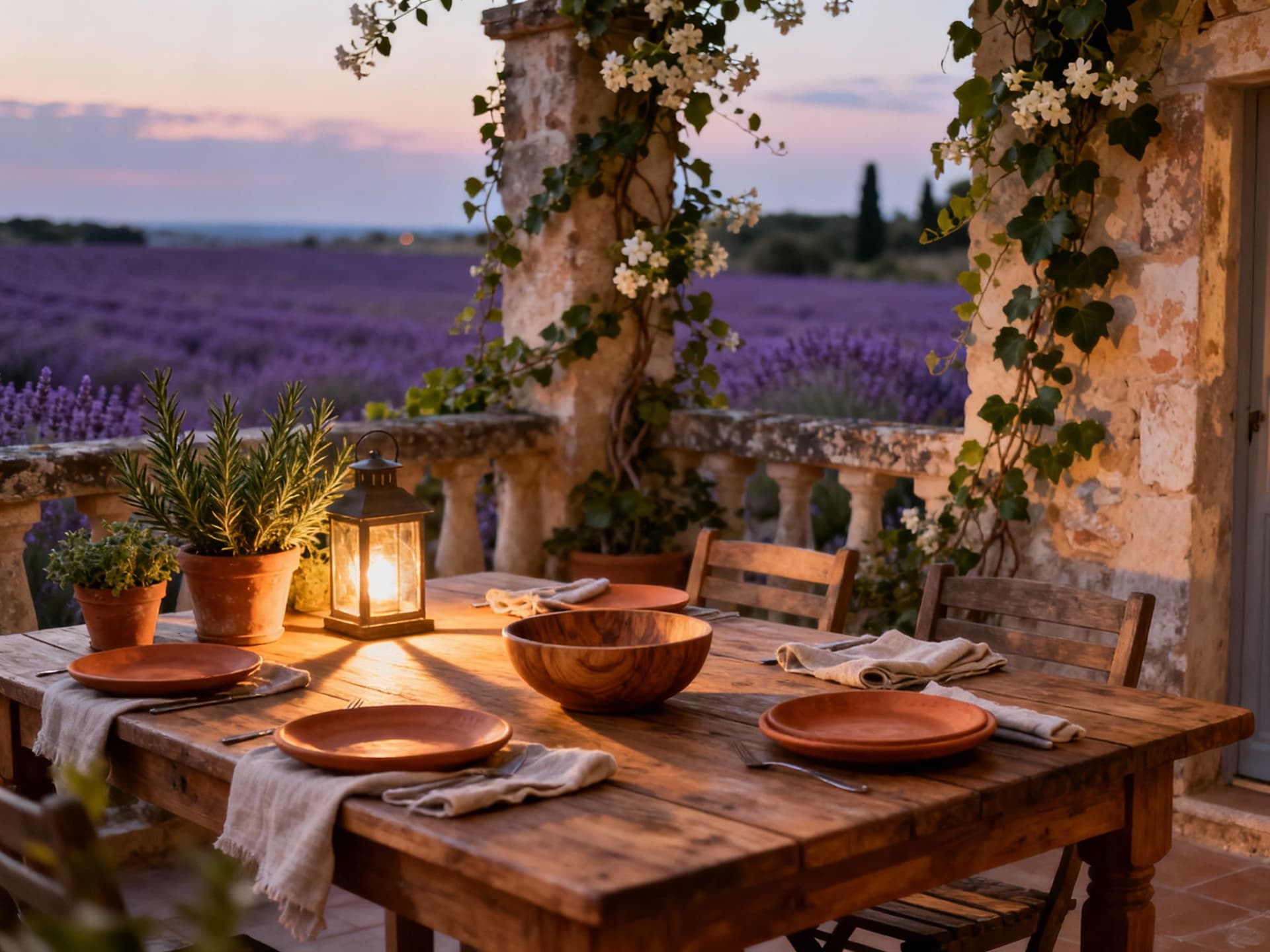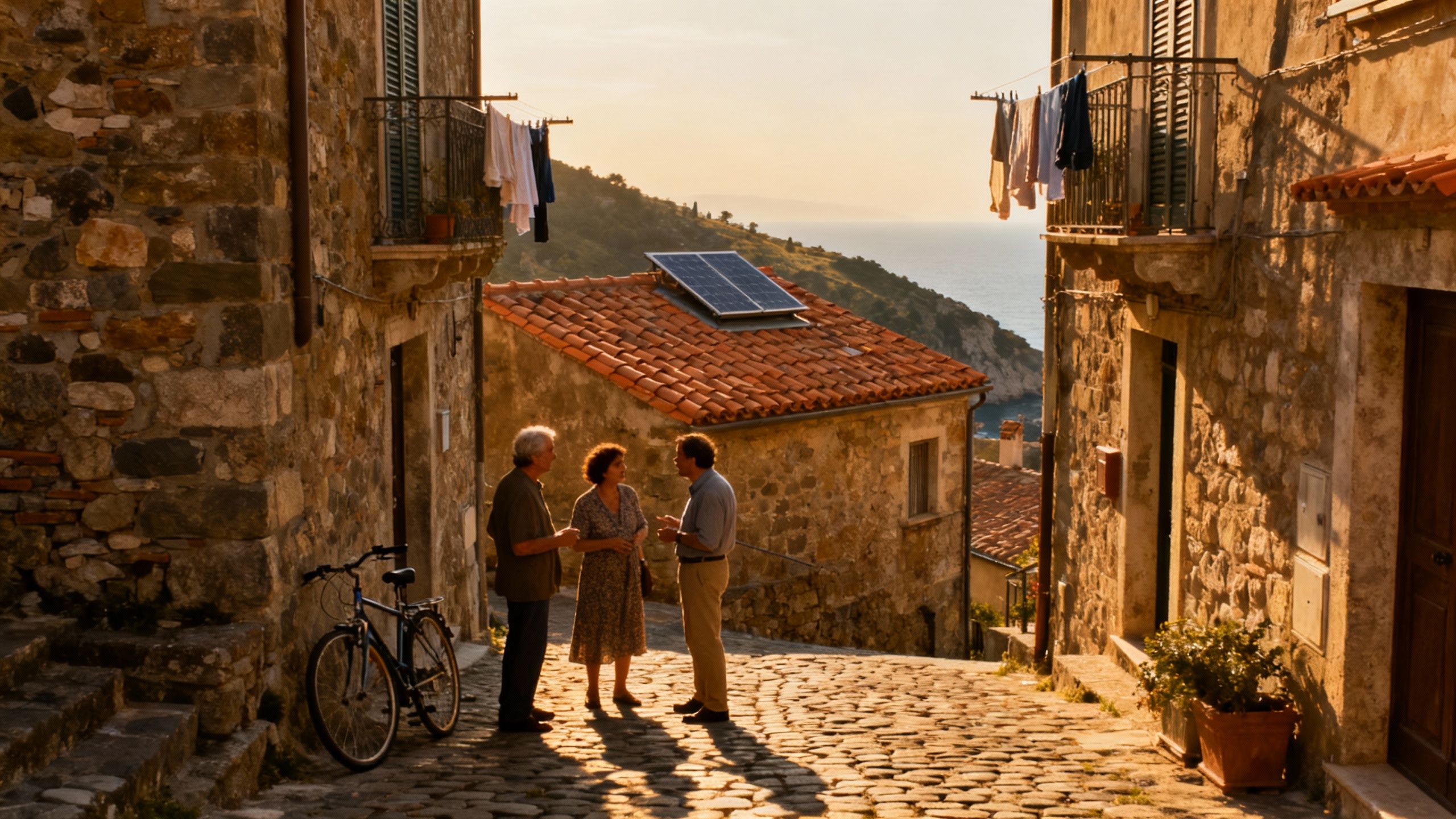Summer’s Siren Song: Why Off‑Season Buys Win in France
Why the summer idyll can mislead buyers: seasonal reality, local craft and data (INSEE, Notaires) show off‑season moves often protect lifestyle value.
Imagine a slow Sunday morning in Aix‑en‑Provence: warm baguette steam, a market stall spilling figs and chèvre, and shutters opening on a limestone street where neighbors stop to exchange news. That quiet choreography — seasonal, sensory, and stubbornly local — is what makes living in France feel less like a relocation and more like joining a long, unrushed conversation with place. For international buyers who prize gardens, craftsmanship, and low‑impact living, France offers villages stitched into vineyards, coastal towns that still know the tides, and cities where courtyards and community gardens matter as much as the metro.
Living the French life — what it actually feels like

To live in France is to live by the calendar of markets, harvests and the school year. Mornings are for espresso at a corner café (try Café de la Paix‑style rituals in Paris or the quieter terraces of rue Saint‑Sernin in Toulouse), afternoons for long walks along the Loire or cliffside paths on the Côte d’Azur, and evenings for slow dinners that stretch late into dusk. This rhythm shapes everything: when terraces are used, how gardens are tended, and what rooms are most lived in — a sunroom for winter light or a shaded courtyard for summer. The result is a home culture that prizes durability, local craft and a close relationship to seasonality.
Neighbourhood color: Paris arrondissements to Provençal lanes
Each French neighbourhood has a distinct personality. In Paris, the 11th hums with cafés and artisans; Le Marais keeps a collage of independent shops and old courtyards; and Montparnasse still carries a quiet studio legacy. Move south and Aix’s Cours Mirabeau hosts morning promenades and Provençal markets, while in Bordeaux the Chartrons district folds wine merchants, antique shops and riverfront promenades into daily life. Coastal towns like Cassis and Sète combine small‑scale fisheries and family bakeries, delivering a seaside pace that’s intimate rather than theatrical.
Food, craft and seasonal living — where property and life meet
Food markets are a weekly ritual and often the social hub: the Marché des Enfants Rouges in Paris, the morning fish market in Marseille’s Vieux‑Port, the Saturday market in Saint‑Rémy‑de‑Provence. Traditional crafts — roofers who still lay chestnut tiles, stone masons restoring old façades, and coopératives selling local honey — are how houses keep their character and energy performance. Buy with a sense for these trades and you secure both the home and the ecosystem that will care for it over decades.
- Market‑day and place highlights: 1) Marché des Capucins, Bordeaux — fresh produce and regional cheeses; 2) Rue Pavee, Le Marais, Paris — independent galleries and intimate courtyards; 3) Port de Nice promenade — seawalks and early morning fishermen; 4) Luberon villages (Gordes, Roussillon) — stone masons and terraced gardens; 5) Etang de Thau near Sète — oyster tasting and birdlife; 6) Canal du Midi towpaths — cycling and local vineyards.
Making the move: practical realities that preserve the lifestyle

Dreams meet markets. France’s housing market recovered from a multi‑year slowdown in 2024–2025, with transaction volumes rising again as mortgage costs eased — a sign that good homes in desirable places are moving, sometimes quickly. That means timing matters differently depending on region: while Paris and the Riviera can flip fast during warmer months, rural stone houses often require patience and local due diligence (insulation, roof condition, drainage) to keep their charm without becoming ecological liabilities. Use national data (see INSEE) to understand macro‑momentum, then drill down to commune‑level trends for realistic expectations.
Property styles and how they shape daily life
From rustic mas to contemporary renovation, each typology has trade‑offs. Old stone farmhouses offer thick walls and thermal mass but often need insulation upgrades and modern heating; urban apartments reward walkability and cafés, yet require attention to co‑ownership rules (copropriété) and quarterly charges. Renovation choices affect biodiversity and energy: choose local timber, lime mortars and passive‑solar glazing to marry tradition with efficiency. Notaires de France’s annual reports remind buyers to budget for both purchase and the hands‑on stewardship older properties demand.
Working with local experts who know how French life happens
- 1) Hire a bilingual notaire or solicitor early — they translate both contract law and local nuance; 2) Choose an agent with proven local, ecological sensibility (someone who can introduce you to trusted artisans and energy‑upgrade contractors); 3) Commission an energy and structural inspection that accounts for seasonal risks (cold, damp, summer heat); 4) Spend time renting in the area off‑season to test the year‑round life; 5) Confirm co‑ownership rules, local taxes and any conservation protections that affect renovations.
Insider knowledge: the uncomfortable truths expats learn slowly
Here’s the contrarian bit: summer visits can be misleading. The Riviera in July dazzles, but empty markets in October, quiet cafés in January, and the practicalities of wet winters reveal whether a place truly fits your life. Many expats buy to a postcard — sunlit façade, lavender field — and only later discover damp basements, seasonal isolation, or limited winter services. Real integration requires curiosity, some French, and a willingness to adopt local rhythms (les horaires, market days, municipal recycling schedules).
Cultural cues that change where you feel at home
Language opens doors: a few phrases will get you invited to the marché’s regular stallholders and to neighborhood dinners. Respect for local timing — long lunches, businesses closing Wednesday afternoons in smaller towns — is not performance; it is how social trust is built. Find the artisans who can restore a roof or fit secondary glazing; their recommendations keep your house breathing and the local economy healthy. Community is the unseen infrastructure that makes houses into homes.
Long‑term living: stewardship as investment
- Practical stewardship actions that protect lifestyle value: 1) Invest in insulation and passive‑solar improvements to reduce heating bills and improve comfort; 2) Use native planting and rainwater capture to reduce irrigation and support biodiversity; 3) Restore rather than replace traditional materials where possible; 4) Build relationships with local craftsmen for phased renovation; 5) Consider community projects (shared orchards, village composting) that increase local resilience.
Conclusion — If you want the French life, do the French homework. Spend time in seasons you’ll actually live through, bring curiosity to craft, and choose experts who value ecology as much as charm. Use national data — from INSEE and Notaires — to set realistic timing and expectations, then let local people teach you how the place breathes. When a house fits the landscape, your life expands: morning markets become new rituals, terraces host late‑summer suppers, and the stewardship you invest returns both comfort and place‑based value.
British expat who traded Manchester for Mallorca in 2017. Specializes in guiding UK buyers to luxury Spanish estates with clear navigation of visas and tax.


